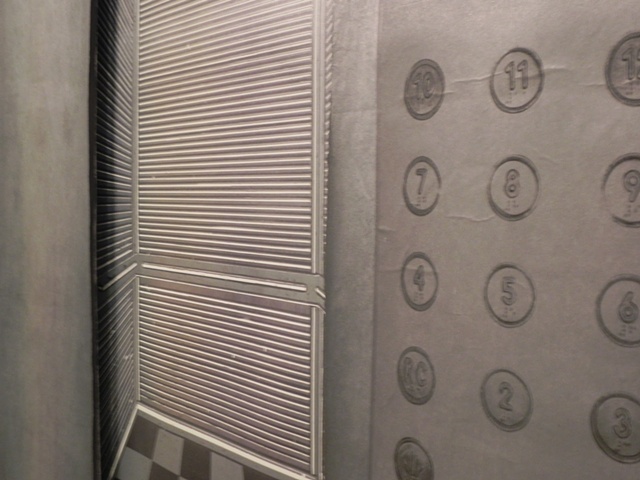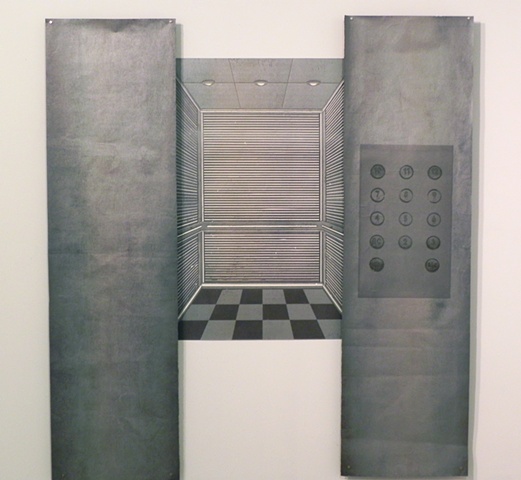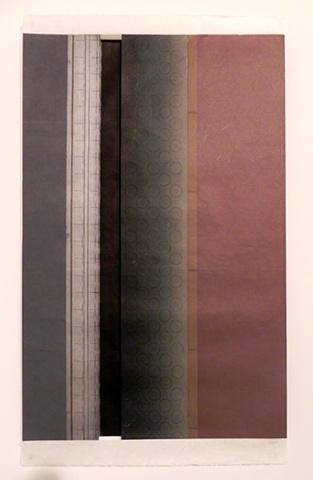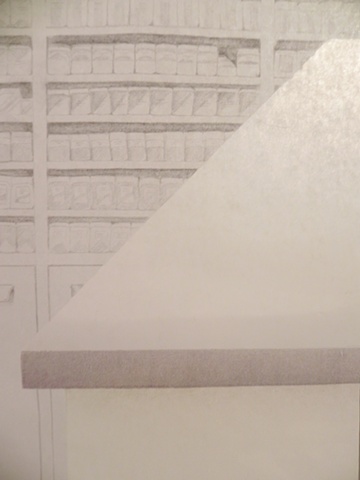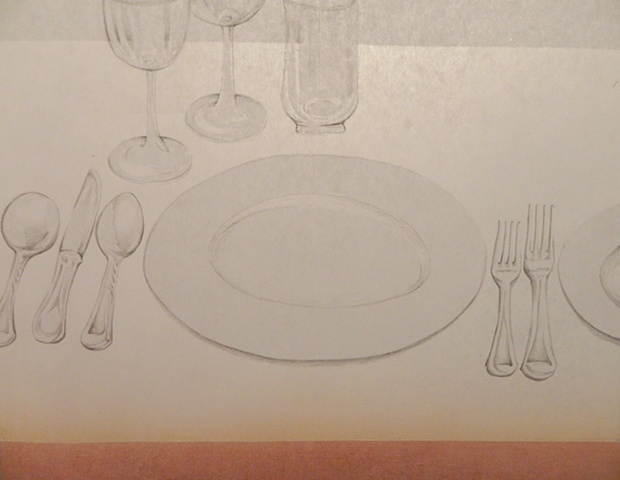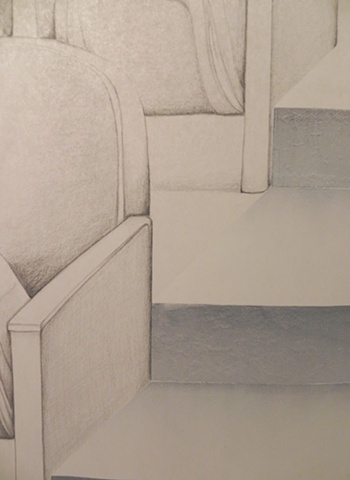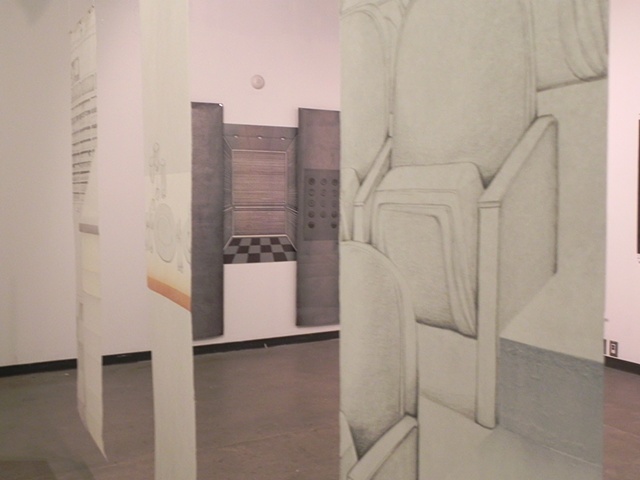Thresholds
The stage presents things that are make-believe; presumably life presents things that are real and sometimes not well rehearsed. More important, perhaps, on the stage one player presents himself in the guise of a character to characters projected by other players; the audience constitutes a third party to the interaction - one that is essential and yet, if the stage performance were real, one that would not be there. In real life, the three parties are compressed into two; the part one individual plays is tailored to the parts played by the others present, and yet these others also constitute the audience. (Goffman, The Presentation of Self in Everyday Life)
In this recent work I have been investigating behaviour and the ways in which social interactions function as performances. In the past, my work has examined performances in everyday life in terms of technique. This resulted in the creation of an instructive bookwork that investigates, step-by-step, the strategies that people execute when navigating through everyday tasks such as walking in public, surviving party-talk and brushing your teeth (with an electric toothbrush). This semester I have tried to carry this idea further, in a more theatrical and ambiguous direction. In this work I am looking specifically at social relations and public acquiescence, the ways in which we behave and perform in public, and the relationship of those performances to understanding some of the ways in which people interact with and make sense of the world.
In everyday life, we interact constantly within the public realm. As a result certain performances of behaviour are continually observed, created, negotiated and necessitated. To perform means to function, operate, or behave in a particular way or to a particular standard and, in the social sense, performances are codified to some degree or another. Robert Leach, a contemporary theatre director and writer, defines the term performance not in relation to the confines of a theatre or similar places of licensed entertainment; rather the term performance involves almost any form of behaviour or interaction. He further explains:
Perhaps we might go as far as to propose that any piece of behaviour/doing/action, which is in some way marked off, or framed, is a performance. The framing enables us to comprehend it as an entity, and we can think about it in clear terms […]. If we examine segments of life as discrete performances, we can extend the notion of the performance to include virtually any social interaction – buying a meal in a restaurant, walking to your room with a friend, catching the bus – and even ‘solo’ events, such as eating an ice cream or surfing the internet. If we see pieces of behaviours as performances, we can analyze them particularly interestingly. It is soon apparent that we ‘perform’ different roles in different situations. (Leach, 2-3)
In this series of works, I have attempted to highlight and frame certain segments of life and schematically map different performances in order to highlight the different ways that performances take place and are approached. Performance, in both theatrical form and daily routines, depends on an oppositional dynamic between the actor and the spectator, the stage and the audience, the space in front the curtain and the space behind, the rehearsed and the improvisational, and private and the public. I am interested the intersection between these oppositional dynamics and I have attempted to map these intersections in performance within everyday scenarios.
In this series I have captured certain moments of performance experienced in everyday situations, and am looking at the experience of performing and behaving according to expectations, what it means to perform, the point at which something becomes a performance, and when it begins and ends. As a result I have attempted to look at these ideas within the notion of thresholds. The first series, Gap, literally recreates different thresholds, both private and public, and elevates the transition between the two spheres. The second series, Elevated Performance, examines the theatricality and anxiety of these public performances through the framing of a specific social scenario or venue, the elevator. This work looks at the ways in which different social situations are initially approached and are then actively performed through the consolidation of time and space within the elevator. The final triptych, initially titled Public Scenario, examines the thresholds of perception in terms of performance. In these pieces, the level at which these scenarios become a performance are highlighted as the ratio of private to public are consolidated and expanded.
In this body of work I am examining the inherent flexibility and negotiation that take place in public interaction and behaviour. Erwin Goffman, a social anthologist, suggests that we are constantly presenting ourselves in each social situation, and in an interaction “each participant ‘reads’ the other’s performance and responds as appropriately as they can […] a little like a drama improvisation” (Leach, 7-8). I am interested in this negotiation process, the ways in which these performance link to cultural practices, rituals, value systems, and what it means to be human. In effect, in this series I am looking at the ways in which performances and behaviours in public contribute to our understanding of the ways in which people interact with and make sense of the world.
